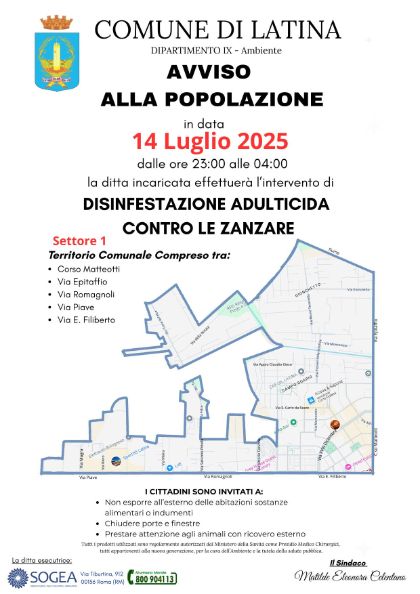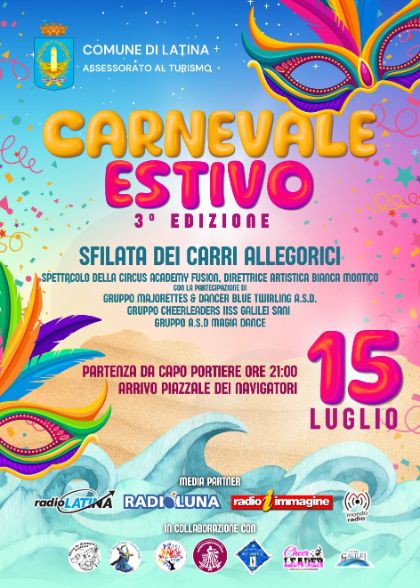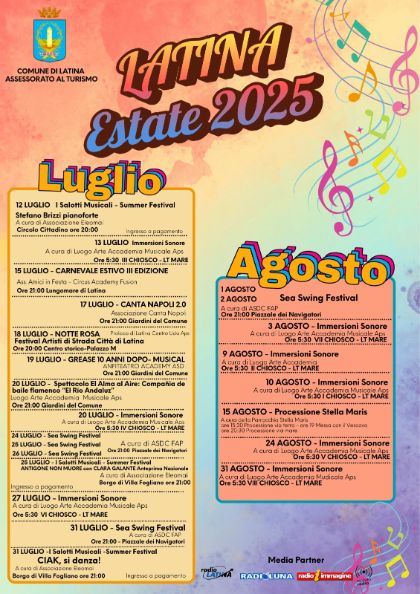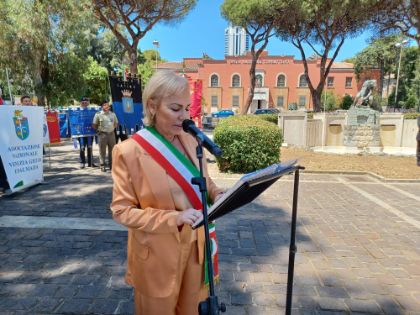Novità
Le novità del tuo Comune
Esplora tutte le novità

Bonus affitti 2024 - Elenchi provvisori contributo canone locazione
Con Determinazione n. 1608/2025 sono stati approvati gli elenchi provvisori relativi agli esiti delle domande di contributo per il pagamento dei canoni di locazione 2024

Fesr: parcheggi via Neghelli e piazzale dei Mercanti, approvati i progetti di fattibilità tecnico-economica
Approvate due delibere di giunta, su indirizzo del vicesindaco e assessore ai Lavori pubblici Massimiliano Carnevale, riguardanti l’approvazione dei progetti di fattibilità tecnica economica dei parcheggi di via Neghelli e di piazzale dei Mercanti.

Insieme siamo più forti, al via gli incontri pubblici
Progetto contro le truffe agli anziani

Al via la nuova disinfestazione contro le zanzare
Dal 14 al 18 luglio interventi in città e nei borghi

10 carri allegorici sul lungomare di Latina: il 15 luglio torna il Carnevale Estivo
Conto alla rovescia per la terza edizione del Carnevale Estivo. Martedì 15 luglio, a partire dalle ore 21, il lungomare di Latina si trasformerà in un’esplosione di colori, musica e magia.

Via libera alla manutenzione delle fontane, si parte dal lungomare
La giunta comunale di Latina ha dato ufficialmente il via libera alla manutenzione ordinaria e straordinaria delle fontane ornamentali presenti sul territorio comunale.

Satricum, avviato l’iter per l’istituzione del Parco archeologico
Avviato, su indirizzo del sindaco di Latina Matilde Celentano, l’iter per la realizzazione del Parco archeologico di Satricum, antica città fondata dai Latini

Carnevale Estivo, Notte Rosa e spettacoli all’alba: Latina lancia la sua estate
Musica, teatro, spettacoli, divertimento e shopping sotto le stelle. Sarà questa l’atmosfera che accompagnerà la rassegna “Latina Estate 2025” organizzata dall’assessorato al Turismo del Comune di Latina.

Convocazione tavolo disabilità e non autosufficienza
Distretto LT 2

Sport e sostenibilità: l’arte del riciclo 2025
Rivolto alle ragazze e i ragazzi under 35 con lo scopo di realizzare un’opera d’arte attraverso la il riciclo del materiale sportivo destinato a essere smaltito come rifiuto
Graduatorie provvisorie di ammissione agli Asili Nido comunali per l'anno educativo 25/26
Determinazione dirigenziale n.1524 del 24/06/2025

93° anniversario della Posa della prima pietra della città di Latina, il discorso del sindaco Celentano
Questa mattina, in piazza del Quadrato, la celebrazione del 93° anniversario della Posa della prima pietra della città di Latina, alla presenza del sindaco Matilde Celentano e delle autorità, insieme alle Associazioni Combattentistiche e d'Arma